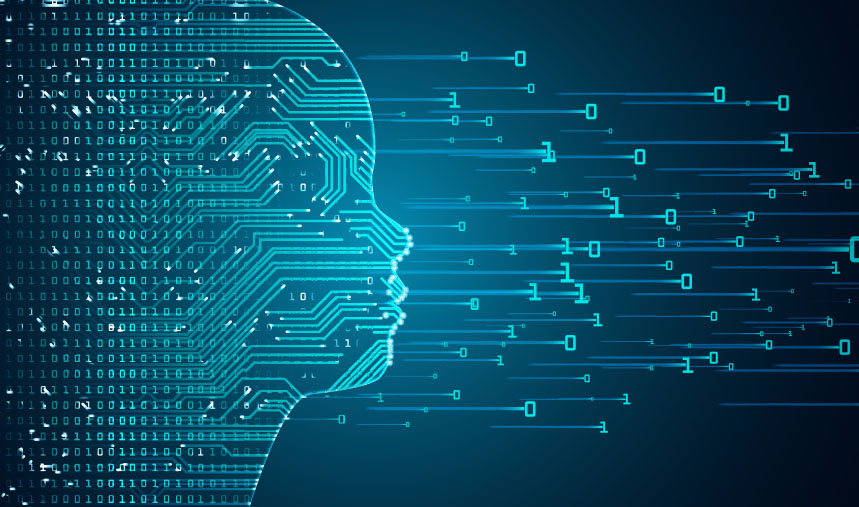Key Points
- Chatbots have evolved significantly, with AI and generative technologies enabling natural, human-like interactions that are enhancing customer service and support operations across industries.
- Different types of chatbots serve different needs, from rule-based and menu-driven bots for simple tasks, to AI and generative AI chatbots for complex, personalized conversations, and hybrid models that combine both.
- Choosing the right chatbot depends on your business goals and customer needs, with factors like complexity of interactions, budget, and user experience shaping the best-fit solution
Chatbots have come a long way from the days when it was easy to tell you were dealing with a machine. Gone are robotic, repetitive, and irrelevant responses and awkward misinterpretations. In fact, thanks to huge advances in large language models (LLMs) and Natural Language Processing (NLP), it’s tough to tell the difference.
This progress has contributed to the explosion of chatbots in customer service and support interactions. Chatbots and virtual assistants are currently the most adopted AI tools, with 69% of organizations integrating it into their operations.
Just think of Erica. The Bank of America’s chatbot found in its banking app, Erica, helps customers with anything from checking their balances, to making payments, to offering advice on how to save money.
It’s no surprise, then, with the use cases mounting up, that more than 987 million people globally use chatbots every day, and 88% of people have had a conversation with a chatbot in the last year.
To truly understand the current and future business value of the evolving chatbot ecosystem, let’s look first at what a chatbot is, the different types that are available, and how to choose the right one to improve customer experiences and deliver business outcomes.
What Is a Chatbot?
A chatbot is a software application designed to simulate conversation with users through text or voice interactions. It acts like a virtual assistant, helping users get information, complete tasks, or solve problems in a conversational form, typically through websites, apps, or messaging platforms.
The goal is to make interactions faster, easier, and more accessible, which is critical for digital-first customers who expect brands to meet them where they’re transacting and interacting.
Different Types of Chatbots
Not all chatbots are created equal. The different types of chatbots and their capabilities can be broadly categorized by how they work, the technology that sits behind them, and the use cases they best serve.
The most common types of chatbots used in modern enterprise environments are:
Menu or Button-Based Chatbot
The simplest and most structured type of chatbot. A menu- or button-based chatbot lets users select from predefined options to move through a guided conversation flow, rather than relying on typed responses. These chatbots are designed for clarity and ease of use, offering users a set of options at each step to help them navigate services or find information quickly.
Commonly used in customer service, healthcare, banking, and e-commerce, their key functions include answering FAQs, routing users to relevant departments, collecting basic information like contact details, and triggering simple workflows such as appointment scheduling or order tracking.
While they lack the flexibility of NLP-based bots, they deliver consistent, low-effort experiences, reducing user confusion and minimizing the risk of misinterpretation.
Rule-Based Chatbot
A rule-based chatbot operates using a predefined set of rules, decision trees, and conditional “if-then” logic to guide conversations and respond to user inputs. Instead of interpreting natural language, it follows structured pathways that are triggered by specific keywords, phrases, or selections.
This type of chatbot is suited to handling predictable, repetitive tasks such as answering FAQs, collecting basic user information, assisting with form submissions, or guiding users through troubleshooting steps. Key capabilities include delivering consistent responses, enforcing process compliance, and integrating with back-end systems to trigger simple actions like creating a ticket or checking account status.
Although rule-based chatbots are limited in flexibility and cannot handle complex or ambiguous queries, they are highly reliable for use cases with well-defined parameters and clear user intent.
AI-Powered Chatbot
An AI-powered chatbot uses artificial intelligence, particularly NLP and machine learning, to understand, interpret, and respond to user inputs in a more human-like and flexible way.
AI chatbots can handle open-ended questions, recognize intent, and learn from past interactions to improve over time.
Their key functions include:
- Providing personalized assistance
- Answering complex or varied queries
- Automating customer support
- Processing transactions
- Integrating with enterprise systems for tasks like order tracking or appointment scheduling
They can also understand context, remember and use details from previous interactions (known as multi-turn conversations), and operate across multiple channels like web, mobile, or messaging apps. This capability makes AI-powered chatbots powerful tools for delivering smarter, more adaptive digital experiences.
Generative AI (GenAI) Chatbot
A GenAI chatbot is an advanced type of AI-powered chatbot that uses LLMs to generate human-like responses in real time, rather than relying solely on pre-defined scripts or rules.
Unlike traditional bots, GenAI chatbots can understand nuanced language, context, and intent, and create original, coherent replies – even for complex or previously unseen queries. Their key functions include engaging in natural, free-flowing conversations, providing in-depth explanations, summarizing or synthesizing information, drafting content, and supporting decision-making.
GenAI chatbots are especially useful in dynamic environments like healthcare, financial services, and customer support, where flexible, intelligent interaction is critical. They can also be customized with domain-specific knowledge, making them powerful tools for delivering personalized, scalable, and high-quality digital experiences.
Voice Chatbot
A voice chatbot is a conversational AI system that interacts with users through spoken language, enabling hands-free, voice-based communication.
Built on technologies like speech recognition, NLP, and text-to-speech (TTS), voice chatbots can understand spoken queries, process them, and respond audibly in real time.
Commonly used in contact center environments, smart speakers, mobile apps, and in-car systems, their key functions include handling inbound and outbound calls, assisting with tasks like account inquiries, appointment scheduling, troubleshooting, or order updates, and guiding users through self-service options.
Voice chatbots improve accessibility, speed, and convenience, especially in scenarios where users prefer or require verbal interaction over typing. At the same time, they also help businesses scale support with consistent and responsive service.
Hybrid Chatbot
A hybrid chatbot combines the strengths of rule-based and AI-powered conversational systems to deliver a more balanced and reliable user experience.
This type of chatbot uses predefined rules and decision trees for structured tasks, like answering FAQs, collecting user information, or guiding through simple workflows. But it also leverages AI and NLP for more complex, open-ended queries and adapt to varied user inputs.
The dual approach of a hybrid chatbot ensures accuracy and compliance for predictable processes, while offering flexibility and intelligence for dynamic interactions.
Key capabilities include seamless hand-offs between automated flows and human agents, context-aware responses, multi-channel engagement, and integration with back-end systems.
Hybrid chatbots are ideal for businesses looking to scale service efficiently while maintaining control, consistency, and a more natural conversational flow.
How to Choose the Right Type of Chatbot
Choosing the right type of chatbot depends on your organization’s unique needs. There are typically a variety of factors that come into play. These include:
- Business goals
- Complexity of customer interactions
- Desired user experience
- Available resources and budget
- Level of integration required
For simple, repetitive tasks like FAQs or basic form-filling, rule-based or menu-driven chatbots offer speed and reliability. If the business requires more natural, flexible conversations, such as personalized support or dynamic queries, an AI-powered or generative AI chatbot would be a better fit.
Hybrid chatbots work best for organizations that need a blend of structure and intelligence, allowing them to scale while handling complex scenarios. Voice-enabled bots, on the other hand, are valuable where hands-free or spoken interaction is preferred.
Ultimately, however, the best choice aligns with the enterprise’s customer needs, technical capacity, and long-term digital strategy.
How Sutherland Can Improve Your Business
When it comes to providing customer experiences and support that exceeds ever-growing expectations, businesses need the right customer experience tools in their arsenal.
Sophisticated AI-powered chat and voice automation for self-service interactions increasingly provide the capabilities that allow brands to consistently deliver on this promise.
Having a strategic partner with the expertise and market-leading solutions at hand can help simplify the transformation and make customer experience a differentiator.
Sutherland Conversational AI
Sutherland’s enterprise-grade conversational AI applications let brands automate customer interactions for support, sales, and other enterprise processes through dynamic UI and NLP.
The solutions gather customer information along the way so they can improve efficiency and deliver consistent, satisfactory experiences during live interactions.Want to explore how you can achieve true customer experience transformation through chatbots? Find out more about Conversational AI.





